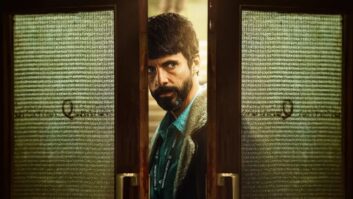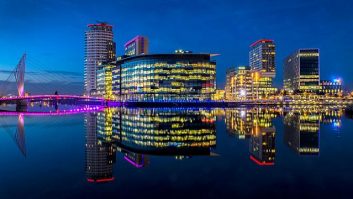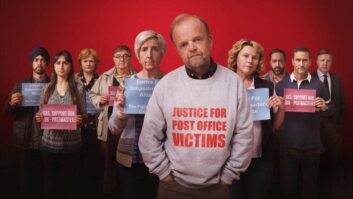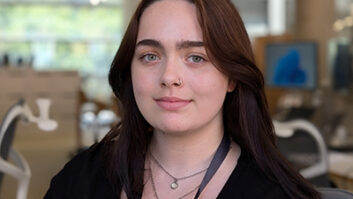New film The Kitchen is set in a dystopian future London where all social housing has been eliminated.
The story follows Izi and Benji as they fight to navigate the world as residents of The Kitchen, a community that refuses to abandon their home.
The film marks the directorial debut of both Kibwe Tavares and Academy Award-winning actor Daniel Kaluuya, who worked with colourist Simone Grattarola at Time Based Arts on the film.
Grattarola talks to TVBEurope about the process, the challenges of grading the film, and the differences of working on an HDR version of the film for streaming compared to the cinematic one.
Can you tell us about your background and how you started out in filmmaking?
I started at West One TV as a runner, I eventually advanced to the machine room, where I transferred music videos, films and TV shows from higher-end formats to Umatic, VHS or Beta for distribution. It was a high-pressure job with a massive turnover of work, but it essentially became my film school. Besides making technical notes, I would watch films, like Jurassic Park, and discuss them with my colleagues. This experience, unbeknownst to me then, provided a solid foundation for my current role, where I analyse minute details, understand narratives, and learn about the technicalities of filmmaking.
How did you get involved with The Kitchen?
I’ve worked with Kibwe Tavares, one of the co-directors, for several years. We collaborated on Robot Scarecrow, and I also worked on Noughts and Crosses, where Kibwe was an executive. He brought me onto The Kitchen, a project he and co-producer Daniel Emerson had been discussing for years. Daniel and co-writer Joe Murtagh wrote it together. Working with both Daniel and Kibwe was a unique and consistent experience, as they had a unified vision for the project.
How involved were Daniel Kaluuya and Kibwe Tavares in the grading process?
They were very much involved throughout. My initial collaboration began with Kibwe and then with Wyatt Garfield, the DoP. They met during a workshop, and Kibwe always envisioned Wyatt’s involvement. The process began with camera tests and evolved into setting the initial look of the film.
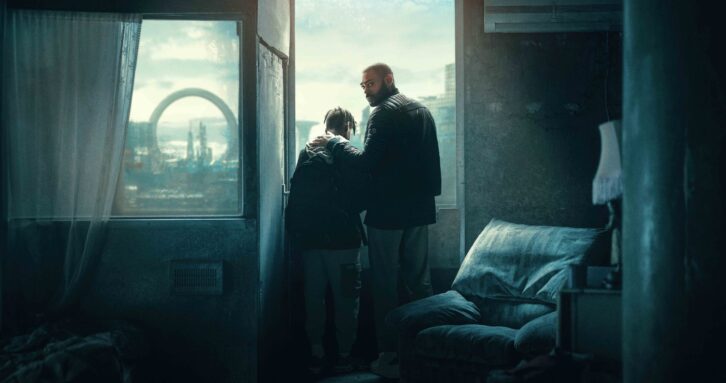
We received 20 minutes of selects during the editorial process, allowing us to begin grading and collaborating with the VFX team. Over two and a half weeks, Wyatt and I, along with Kibwe and Daniel, worked on the grade. Despite their busy schedules, Kibwe and Daniel provided clear visions, particularly Daniel’s insistence on a sharp, vibrant depiction of London, steering away from the typical grey imagery.
How do you go about creating that shared vision?
In the grading process, developing a shared visual language with the team is a crucial and enjoyable aspect. As a colourist, it’s important to remain open and adaptable, recognising that grading isn’t just about technical precision. It involves understanding how different people perceive and discuss colour, which can be highly subjective. Working with someone like Daniel, who comes from an acting background rather than a technical one, presents a unique perspective. Despite not having the technical terminology, the way in which Daniel communicates his vision was remarkable and beautiful. This diversity in viewpoints enriches the process, making the interpretation of someone’s vision a fascinating part of the job.
What were your aims with the colour grade?
The primary aim was to support the story and its visual intention. We experimented with different ideas and looks, such as using a scatter tool for diffusion. While Kibwe and Daniel initially weren’t keen on it, we found it useful in certain scenes. Our approach focused on creating a visual language that resonated with everyone involved. We ensured that no idea was discarded without exploration, leading to a well-considered final product.
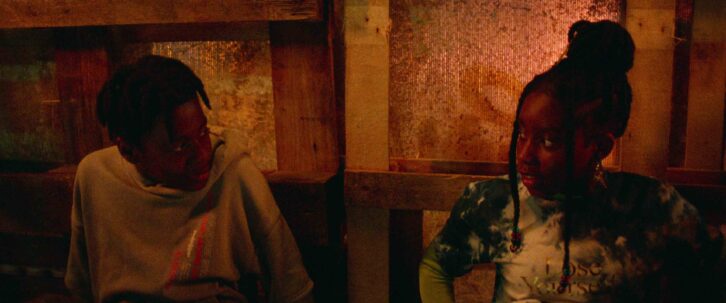
The film is set in a dystopian version of London. How did you use the grade to reflect this?
That was a challenging aspect because defining ‘dystopian’ is subjective. We initially looked at films like Children of Men for inspiration. However, our story’s emotional depth between the characters Izi and Benji drove the grading process. We aimed for a realistic look that didn’t overshadow the narrative. The final grade was subtle yet impactful, aligning with the film’s contemporary, yet timeless feel.
Did you face any challenges in the grade? If so, how did you overcome them?
This project had the unique status of being an independent film while also receiving support from Netflix, which significantly aided our budget, particularly for visual effects (VFX). However, this also introduced the complexity of having to deliver both a High Dynamic Range (HDR) version and a theatrical version. Early in the process, we faced the decision of prioritising one over the other. Generally, I prefer starting with the theatrical version, especially for a film like this that is best experienced in a cinema setting. This approach also helps in creating a reference point for the HDR version.
However, given Daniel and Kibwe’s vision of a bright and vibrant world, we realised that beginning with the HDR version could be advantageous. This contrasted with my usual preference for a more classically cinematic look. Yet, the HDR process revealed an exciting level of detail and vibrancy that surprisingly suited the film. While we initially hadn’t planned for this, both versions were explored, and we decided to progress with the HDR first, then revisit the theatrical version.
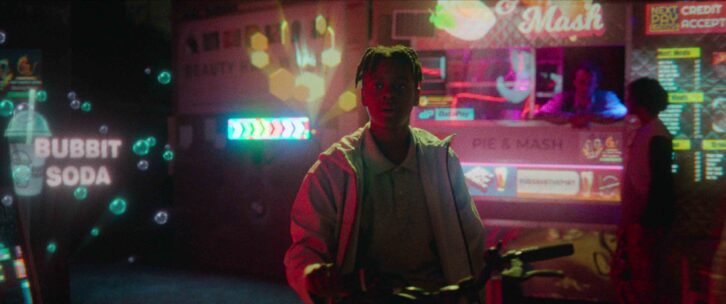
The most significant challenge arose when we needed to deliver the theatrical version for the London Film Festival while still finalising the HDR. Juggling these two different grading processes simultaneously was a complex task, typically done sequentially. The pressure of meeting delivery deadlines while ensuring high-quality VFX added to the challenge.
Throughout this process, Daniel and Kibwe’s roles as directors were invaluable. Their ability to listen, embrace new ideas, and collaborate was crucial. Their openness and thirst for discovery greatly facilitated the workflow and decision-making, making the entire experience rewarding.
How did DaVinci Resolve aid the grading process?
DaVinci Resolve has been my toolset for many years. Its responsiveness and capabilities in the ACES colour space make it ideal for our work. We easily managed camera sources and transforms, making the process efficient and effective. I’ve never had an opportunity to question Resolve because I’ve never felt limited.
We utilised the Depth Map feature for certain shots to add haze and match other scenes. We’d used it to create our own mattes, and then using those we’d add haze to help match shots. We used that a lot in conjunction with Scatter, a diffusion plug-in by Video Village, where we needed to further refine efforts to match some shots. This tool, along with Scatter, was new to me on this project and proved quite useful.
What’s next for you?
We are set to work with some really interesting young filmmakers and independent voices in the next few months, which is quite exciting. I’m working on a film called Daughters with director Natalie Rae, to be graded soon, and a modern London retelling of Hamlet featuring Riz Ahmed and directed by Aneil Karia, rekindling their relationship after winning an Academy Award for best short film The Long Goodbye, which I also graded.
The Kitchen is released on Netflix on 19th January.


